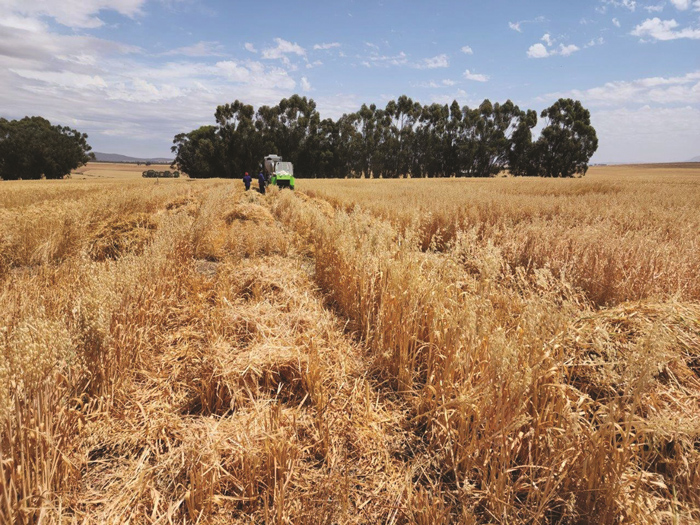
ARC-Small Grain, Stellenbosch
 Petrus Delport,
Petrus Delport, ARC-Small Grain, Stellenbosch
In the past, oats have mainly been cultivated for animal feed. Producers have known the value of oats for grazing, hay and seed production for decades.
Oats have also become increasingly important in crop rotation systems and in low cultivation practices. Furthermore, there has been an increase in the oats breakfast cereal market. With the rise in the popularity of vegan and gluten free diets, oats are an ideal alternative. Oats can be used to produce oat milk and gluten free products. The health benefits of oats have also been widely researched and it has proven to be one of the healthiest grains on earth. This is why oats are commonly used in health and energy bars.
ARC-Small Grain has a few top achieving oat cultivars that are excellent for the production of breakfast cereals as well as for animal feed. There are currently approximately ten oat cultivars that are commercially available from the different seed companies. At the ARC, three cultivars are available and another one has received plant breeders’ rights during 2022. The new cultivar will soon be assigned a marketer and will be sold under the name Piketberg. There are also two advanced lines that are currently being evaluated and are showing excellent results.
Unlike the wheat breeding project at the ARC, the oat development project only consists of a selection process. The wheat projects each have crossing blocks where crosses are made between two carefully selected parents. In the case of oats, the new cultivars are all selected and imported from international nurseries. These cultivars are meticulously evaluated for yield, disease resistance and agronomic traits. Initially, all the new material is planted as single rows. This is done for three years and during this time all material that is disease susceptible or not suitable for South African growing conditions is eliminated.
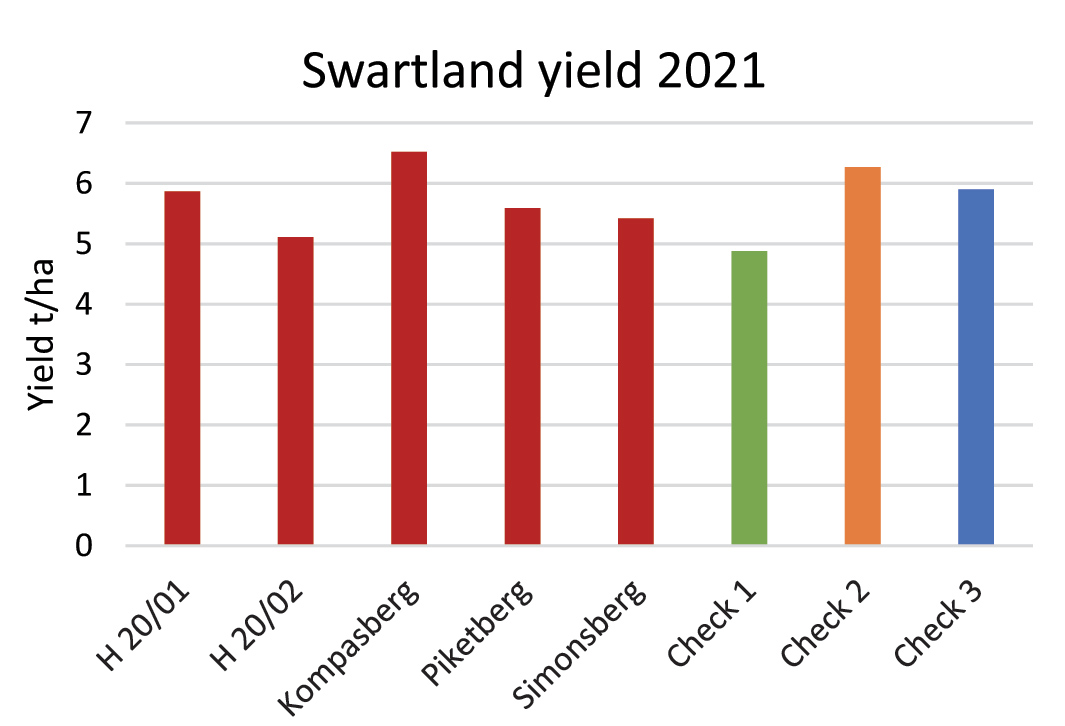
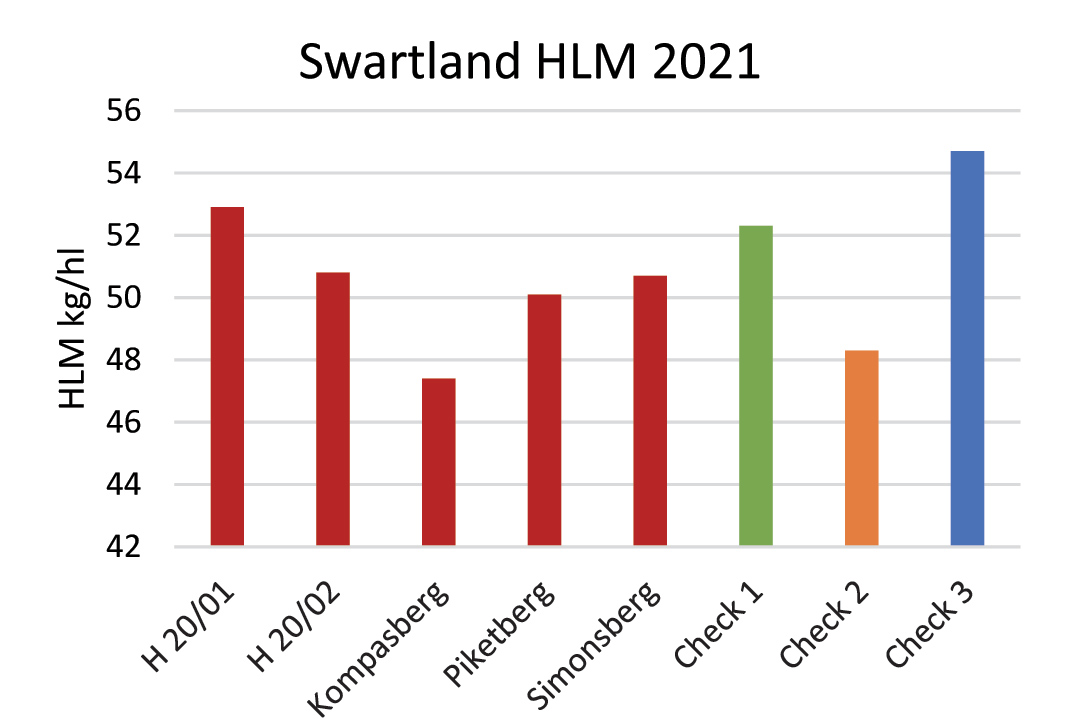
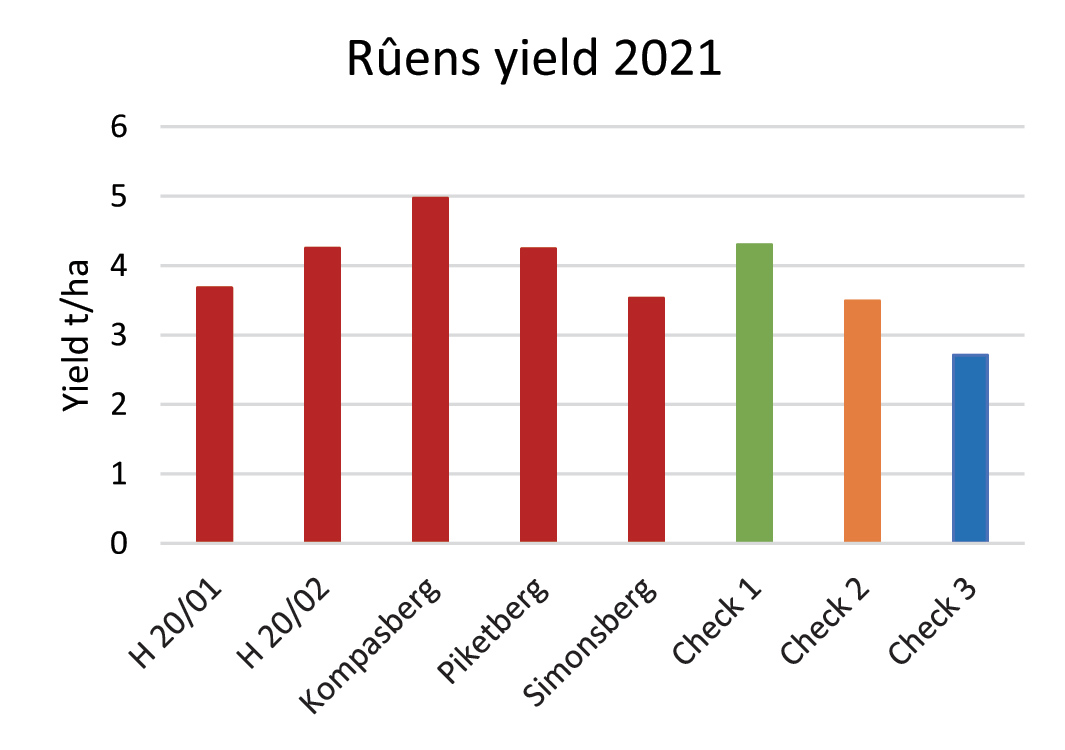
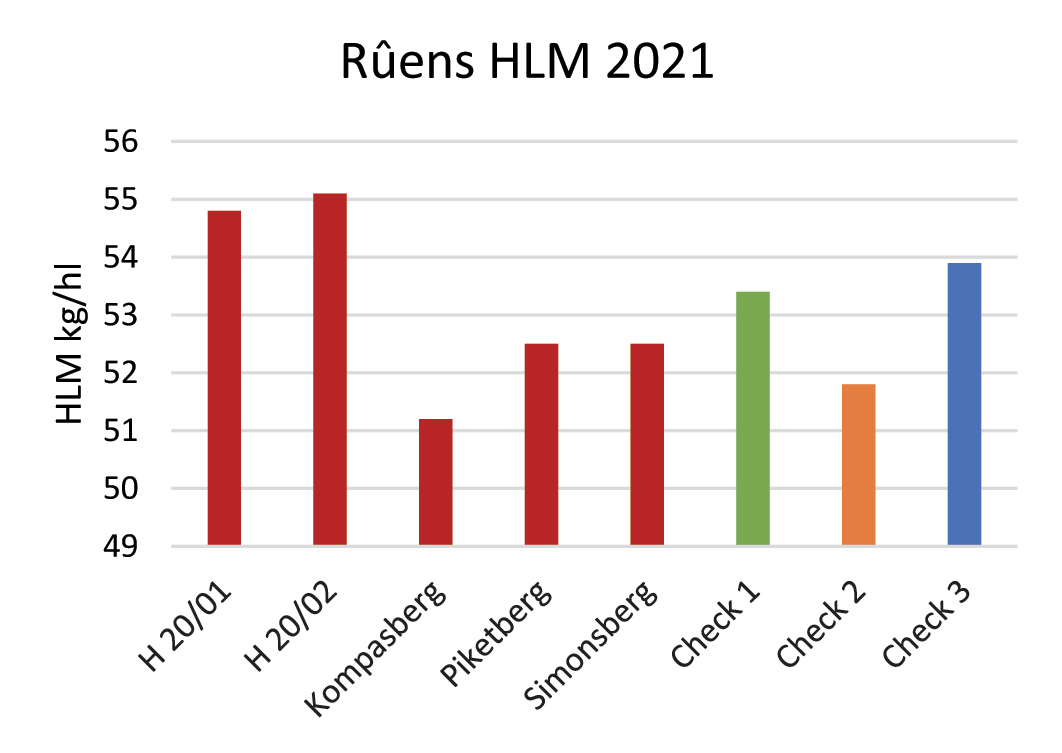
At the end of the three years all segregating material has been eliminated and a pure seed source has been generated. This seed is used to evaluate the material in larger advanced trials and strip trials. Advanced lines that prove to have superior yield and hectolitre mass will at this stage be entered into the national evaluation trials.
 The new cultivar, Piketberg, has excellent biomass production and grain yields with acceptable quality for the production of breakfast cereal. Piketberg has a three-year yield average of 3,8 t/ha in both the Swartland and Rûens areas. The cultivar is, however, more than capable of producing yields exceeding 4 t/ha as shown in the graphs. Piketberg still needs to be awarded a seed marketer, but will surely become the flagship oat cultivar for the ARC. As soon as the cultivar is commercially available, local farmer associations will be notified. Data have also been provided in the graphs for two up-and-coming cultivars – H20/01 and H20/02 are advanced lines that have already been entered into the national oat evaluation trials.
The new cultivar, Piketberg, has excellent biomass production and grain yields with acceptable quality for the production of breakfast cereal. Piketberg has a three-year yield average of 3,8 t/ha in both the Swartland and Rûens areas. The cultivar is, however, more than capable of producing yields exceeding 4 t/ha as shown in the graphs. Piketberg still needs to be awarded a seed marketer, but will surely become the flagship oat cultivar for the ARC. As soon as the cultivar is commercially available, local farmer associations will be notified. Data have also been provided in the graphs for two up-and-coming cultivars – H20/01 and H20/02 are advanced lines that have already been entered into the national oat evaluation trials.
For more information contact Petrus Delport at 021 809 3552.
